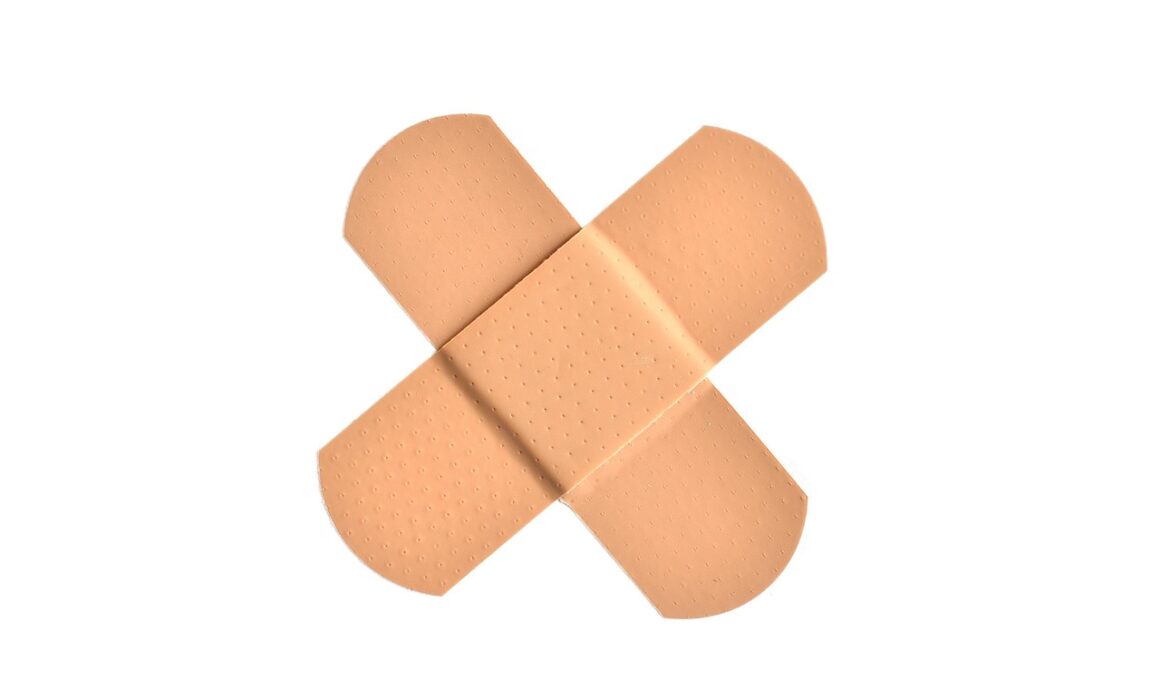The Best Cross-Training Exercises for Tennis Injury Prevention
Tennis is a physically demanding sport that requires agility, strength, and endurance. Unfortunately, with the intensity of play, athletes often experience various common injuries. Implementing cross-training exercises can help strengthen muscles, improve flexibility and enhance overall performance while minimizing the risk of injury. One of the best approaches to cross-training involves engaging in activities that complement tennis skills. These exercises target muscle groups used in the sport, providing supplementary conditioning. Moreover, incorporating strength training into your routine will build the muscle endurance necessary for preventing injuries. Athletes must focus on maintaining their core stability and leg strength. Stable muscles in these areas can help maintain balance on the court and withstand rapidly changing directions. Always prioritize warming up before workouts and practicing proper form during exercise, as this reduces injury risks. Remember, consistency in your training regime is also pivotal. It ensures that both conditioning and strength develop without abrupt increases that may lead to strain. In the long run, this strategy will facilitate better performance on the court and help you enjoy tennis injury-free.
One of the most effective cross-training exercises for tennis injury prevention is rooftop stretching. This practice helps in improving overall flexibility and can significantly aid muscle recovery after intense matches. Additionally, strength exercises focusing on specific muscle groups, like the shoulders, legs, and core, can contribute to injury prevention. Consider adding deadlifts, squats, and push-ups into your routine to target vital muscle groups. Cross-training also includes cardiovascular workouts, such as cycling or swimming, which boosts endurance. These aerobic activities enhance heart health and allow muscles sufficient time to recover from the rigors of tennis. Furthermore, engaging in yoga provides benefits like improving flexibility and promoting body awareness, which can lead to better on-court performance. Practicing these activities at least two to three times weekly will ensure your conditioning and flexibility remain optimal. Always listen to your body to avoid overtraining, as this can lead to injuries. Additionally, consult a fitness expert or a physical therapist to tailor specific exercises that cater to your unique physical requirements. This will maximize injury prevention while effectively enhancing your overall tennis performance.
Cardiovascular Endurance and Fitness
Building cardiovascular endurance is crucial for tennis players, given the sport’s demanding nature. A fatigued body can lead to poor performance and increased injury risk. Incorporate running intervals into your training to simulate match conditions while enhancing your endurance. Sprinting during short intervals can mimic the quick movement required during a tennis match. It’s essential to vary your intensity levels to match the sporadic nature of the game. Engaging in plyometric exercises, such as box jumps and burpees, will develop explosive strength, crucial for quick movements on the court. These exercises help in improving reaction speed and jumping ability, which are vital aspects of tennis gameplay. Additionally, agility drills, including cone drills and ladder exercises, can dramatically improve footwork and overall agility—key elements in avoiding injuries during play. Integrating strength and endurance workouts into your strategy will ensure that your body is prepared for the challenges posed by tennis. Moreover, ensure you focus on hydrating adequately during exercises, as hydration is paramount for maintaining performance and preventing cramps and injuries. Create a well-rounded plan that balances strength, agility, and endurance training to enhance your performance and reduce injury risks.
One of the more underrated aspects of tennis fitness is practicing footwork drills. Improving footwork directly correlates to reduced injuries on the court. By mastering lateral movements, quick turns, and reactive positioning, players decrease the chances of strains or sprains during matches. Drills like ‘two-ball catch’ or agility hurdles can be seamlessly integrated into your training sessions to enhance foot speed and coordination. Additionally, enhancing your grip strength can be surprisingly beneficial for overall tennis performance. A strong grip minimizes the risk of wrist injuries when swinging vigorously at the ball. Tools like hand grippers and squeezing tennis balls can boost grip strength over time. Implement core-strengthening exercises such as planks and rotational movements to support transitions. A strong core stabilizes your body during intense movements, thereby contributing to injury prevention. Furthermore, proprioceptive training, involving balance exercises on unstable surfaces, can improve your body’s awareness. This awareness aids in maximizing your reaction time and overall performance. By diversifying achievements in these areas, athletes can foster improved strain capacity and injury prevention, encouraging a more enjoyable playing experience throughout the season.
Incorporating Flexibility Training
Flexibility is imperative in any sport, possibly more so in tennis, where body rotation and reaching can lead to injuries without proper stretching. Implementing a routine of dynamic stretching, especially before matches, prepares muscles for the intensity ahead. Concentrate particularly on the legs, hips, and shoulders to ensure maximum range of motion. As part of your cross-training, consider adding static stretching following your workouts. This includes holding stretches for each muscle group, especially the hamstrings, quads, and back. Holding these stretches for twenty seconds helps maintain muscle length and promotes recovery post-exertion. Pilates and yoga can also be valuable additions to your training schedule. Both activities enhance overall flexibility and core strength, which is crucial for generating power in your strokes. On a broader scale, practicing breath control during such exercises improves lung capacity and overall stamina, enhancing your performance in tennis. Don’t forget to regularly assess your flexibility progress through dynamic stretches and compare with your performance. Regular feedback can help in re-adjusting your approach to ensure a continuous improvement in movement and injury prevention over time.
Nutrition plays a significant role in enhancing athletic performance and injury prevention in tennis players. A well-balanced diet rich in proteins, healthy fats, and complex carbohydrates stabilizes energy levels through rigorous practice sessions. Ensure to consume a variety of fruits and vegetables as they aid in recovery and contribute vital nutrients. Hydration cannot be understated; players should maintain optimum hydration levels to prevent cramps or fatigue during matches. Consider working with a nutritionist to develop an excellent meal plan that aligns with your training regime. Pre-and post-game meals are crucial; consuming carbohydrates before a match provides necessary energy and ensures sustained performance. Following a match, include proteins to aid muscle recovery. Snacking on nuts or protein bars during extended breaks keeps energy levels steady. Taking into account the nutrients you consume goes a long way in avoiding injuries. A well-nourished body can withstand the rigors of training and competition while recovering effectively. Implementing effective nutrition strategies will complement your training and overall athletic performance, ensuring that you stay fit and healthy throughout your tennis journey.
Conclusion on the Importance of Cross-Training
In conclusion, cross-training exercises are vital in preventing common tennis injuries while boosting performance on the court. The diverse approach helps in developing strength, enhancing endurance, and improving flexibility simultaneously. Each component, from running drills to yoga, serves a specific purpose that collectively enriches the player’s physical abilities. Engaging in varied activities creates a well-rounded athlete capable of adapting and responding with grace during intense matches. Ultimately, staying injury-free is essential for reaching personal goals and maximizing enjoyment in the sport. As you strategize your training plan, consider consistency and dedication to the cross-training regimen. Remember that every athlete’s journey is unique; discover which exercises resonate with your body and performance needs. Personalize your workouts accordingly to maintain motivation and give you insight into your improvements. Surround yourself with knowledgeable professionals and peers who can offer additional insights and encouragement throughout your tennis journey. Embrace the process, and over time, the combination of physical readiness and mental resilience will pave your way to becoming a successful tennis player, capable of navigating through the highs and lows of competitive sports.
This dedication to cross-training ultimately ensures a healthy, functional body capable of excelling in the dynamic world of tennis. As you embrace this comprehensive approach, not only will your skill set diversify, but your body will be equipped to handle competitions effectively while reducing the likelihood of injuries. Remember that prioritizing your fitness regime means understanding and respecting your body’s needs. Finding a healthy balance will enable longevity in your tennis career. Always seek ways to challenge your body, whether through weight training or agility drills, to keep your fitness journey engaging. Also, review your progress periodically and make adjustments to meet evolving needs. Incorporating rest days is equally essential to allow for muscle recovery, leading to better performance each time you step onto the court. Cultivating a routine involving cross-training, proper nutrition, and rest will establish a solid foundation for success. Never underestimate the importance of maintaining mental resilience and confidence in your abilities. By understanding the science of injury prevention and performance enhancement through cross-training, your pathway in tennis can be both fulfilling and enjoyable.


